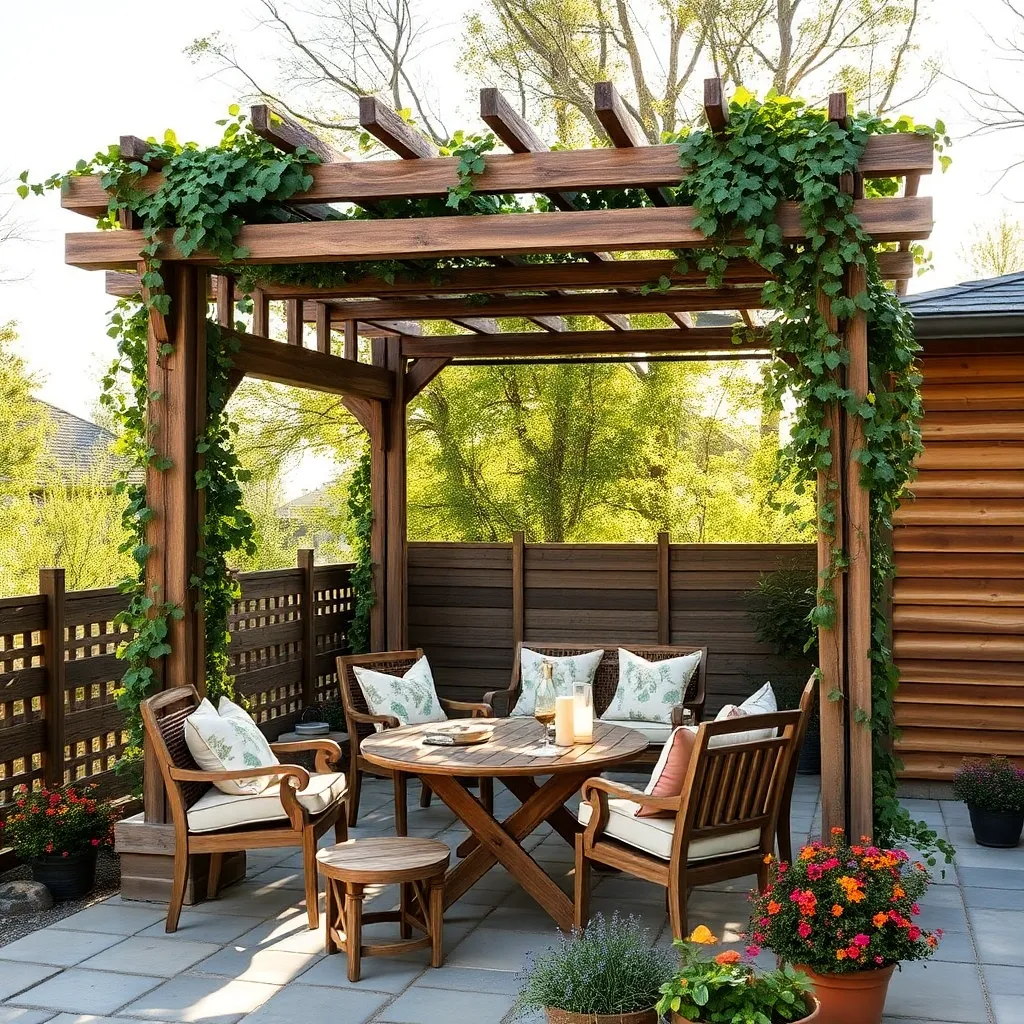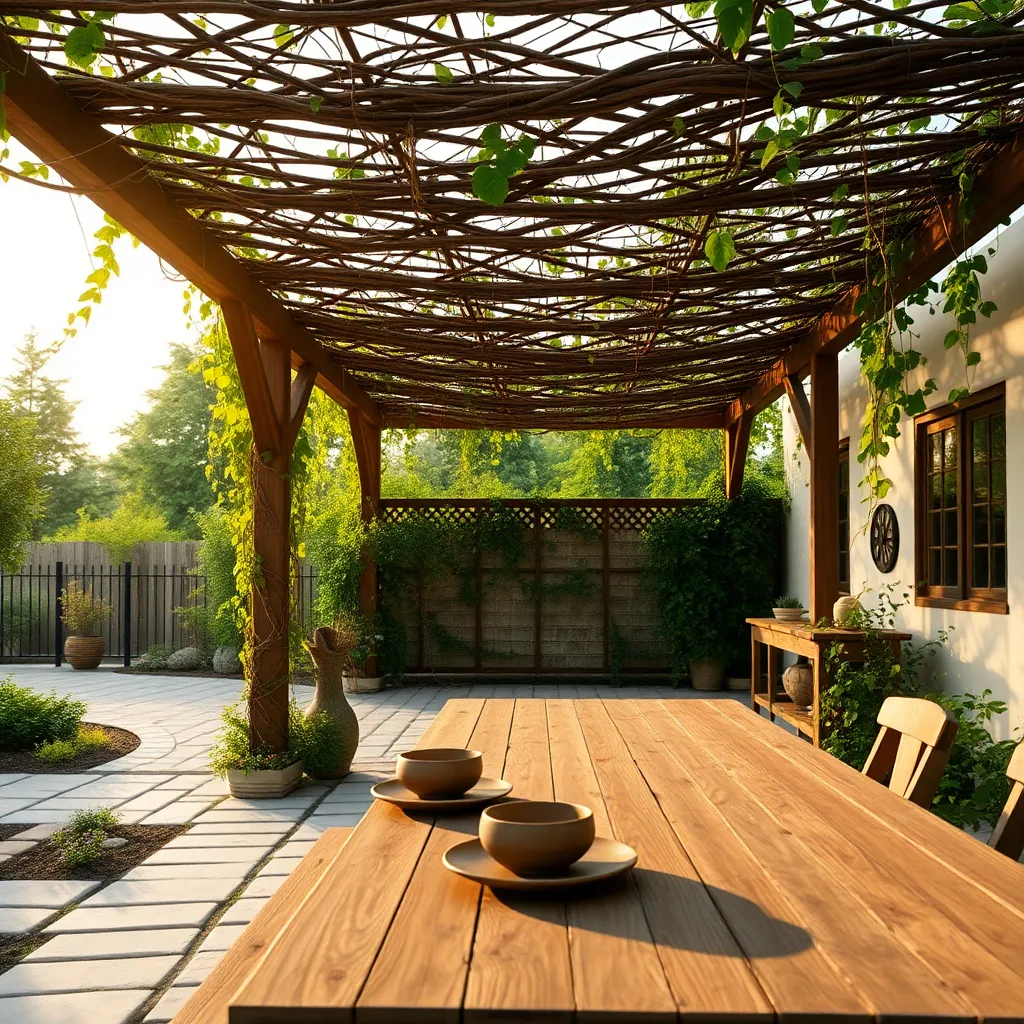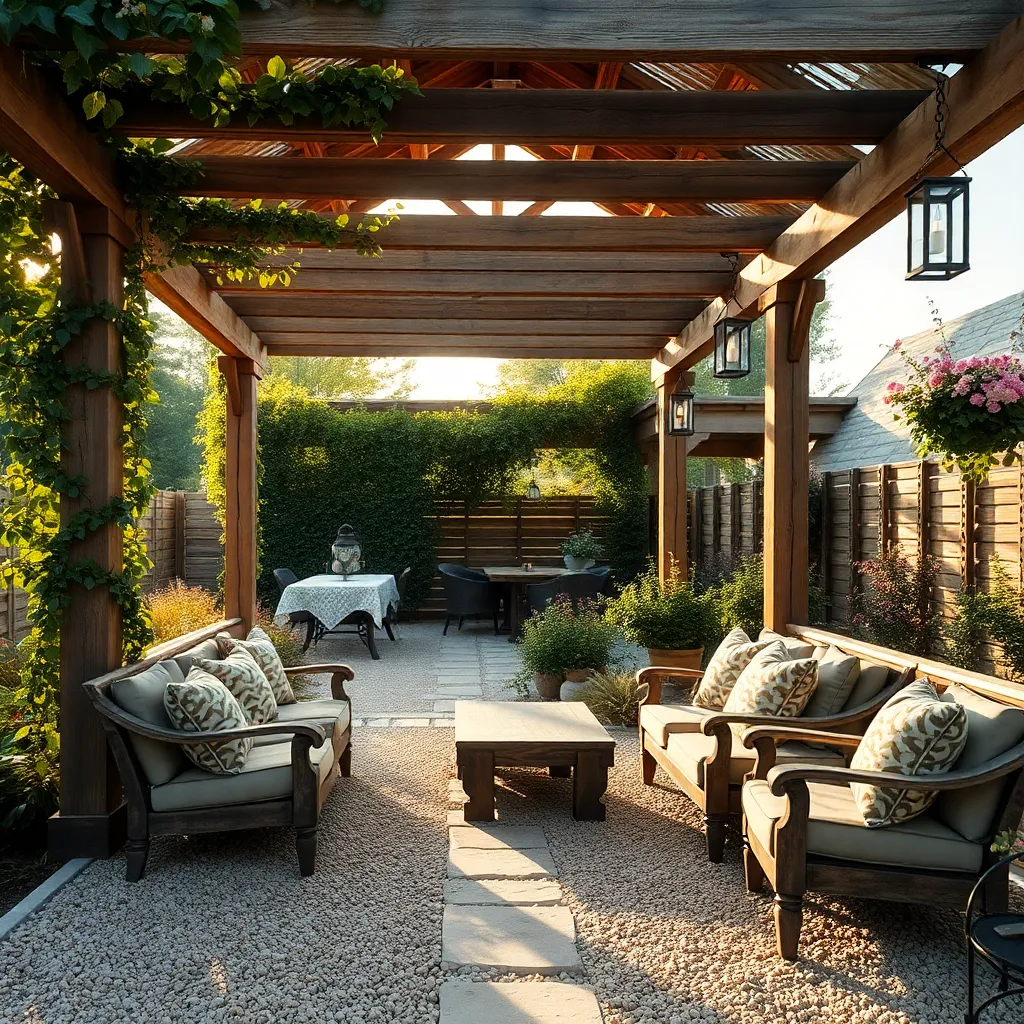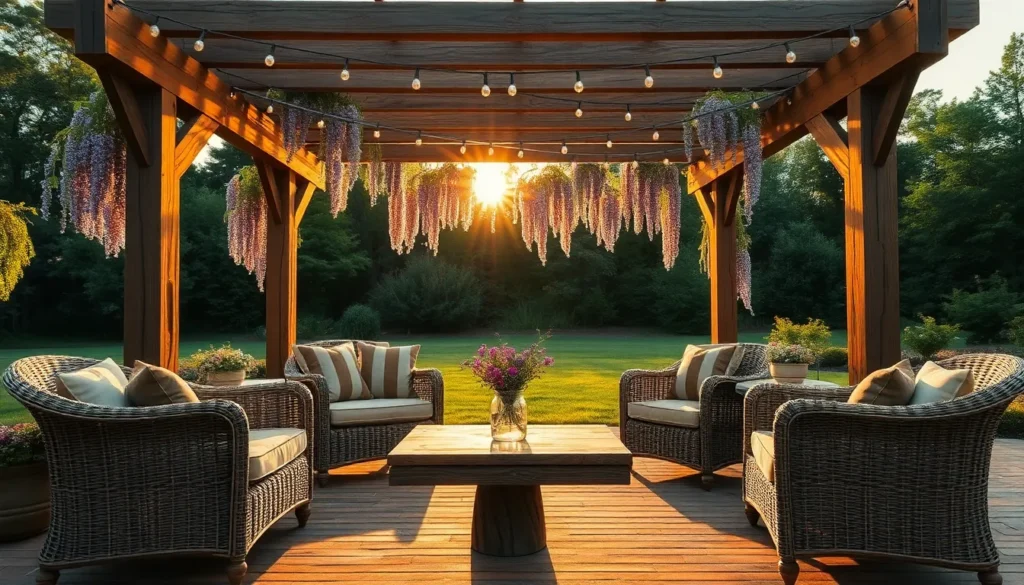Imagine stepping into your backyard and being greeted by the timeless charm of a rustic pergola, crafted with your own hands. Whether you’re a beginner eager to embark on your first DIY adventure or an experienced homeowner looking to enhance your outdoor oasis, “DIY Rustic Pergola Ideas with Natural Materials” is your go-to guide. These ideas blend creativity with nature, ensuring your outdoor space not only looks stunning but also feels like a personal retreat.
This collection is a treasure trove of inspiration and practical advice, designed to boost your confidence and ignite your creativity. Each idea is infused with the warmth of natural materials, offering practical benefits like shade, structure, and style. Embrace the joy of outdoor living and transform your backyard into a haven that reflects your personality and love for the outdoors.
Utilize Reclaimed Wood for Structure

Using reclaimed wood for your pergola not only adds a rustic charm but is also an eco-friendly choice. Begin by sourcing sturdy, weather-resistant wood such as cedar or redwood from old barns, fences, or pallets. Ensure the wood is free of rot and pests by inspecting each piece carefully. Once selected, cut the wood into lengths of about 8 to 10 feet for the vertical posts and 6 to 8 feet for the crossbeams, making sure to sand any rough edges for a smooth finish.
For a more advanced touch, consider incorporating unique design elements like arched beams or decorative end cuts on the rafters. These details can elevate the look of your pergola while maintaining its rustic appeal. When assembling, use galvanized screws or bolts to prevent rusting, and consider applying a clear outdoor sealant to protect the wood from moisture and UV damage. This approach ensures your pergola is not only stylish but also durable for years to come.
Incorporate Climbing Vines for Shade

One effective way to enhance your rustic pergola is by incorporating climbing vines, which provide both shade and aesthetic appeal. Start by selecting fast-growing vines like wisteria, clematis, or honeysuckle, known for their beautiful blooms and hardiness. Ensure the pergola structure can support the weight of mature vines by using sturdy, reclaimed wood posts with a diameter of at least 4×4 inches.
Attach a lattice or wire grid to the top and sides of your pergola to guide the vines as they grow, giving them a clear path to follow. For beginners, consider planting vines in large containers to control growth and placement, while experienced gardeners might plant directly in soil for more vigorous development. Regularly prune to manage growth and maximize shade, ensuring your outdoor space remains a cozy retreat throughout the seasons.
Secure Branches for Natural Roofing

For a rustic pergola that blends seamlessly with nature, consider using sturdy branches as natural roofing. Start by collecting branches that are about 1 to 2 inches in diameter. They should be long enough to span the width of your pergola, ensuring adequate coverage. Use branches from hardwood trees like oak or maple for durability. Secure them in place by weaving them through the pergola’s beams, or use twine or galvanized wire for added stability.
Beginner gardeners should choose branches that are straight and even in thickness for uniformity. For a more advanced touch, try creating a pattern or alternating branch sizes to add visual interest and texture. Ensure that the branches are tightly secured to withstand weather conditions, particularly wind. Regularly inspect and replace any weakened branches to maintain the structure’s integrity and safety. This natural roofing not only provides shade but also creates a charming, organic aesthetic that enhances your outdoor space.
Enhance Ambiance with Stone Accents

Adding stone accents to your rustic pergola can dramatically enhance its ambiance and provide a grounded, natural feel. Start with simple elements like a stone pathway leading to your pergola, using durable materials such as flagstone or cobblestone. For a more integrated look, consider building a low stone wall around the base of your pergola. This can serve as both a decorative feature and a functional seating area, offering a cozy spot for guests to linger.
For those looking to add a sophisticated touch, incorporate stone columns as part of your pergola’s structure. Use natural stone veneers to clad existing wooden posts, blending rustic charm with elegant design. Ensure the stones are securely adhered using a high-quality mortar suitable for outdoor use. Remember, the key to achieving a cohesive look is to choose stones that complement your existing landscape, creating a seamless transition from your garden to the pergola.
Create Grounding with Gravel Paths

To ground your rustic pergola and enhance its natural charm, consider installing gravel paths. Gravel is an affordable and low-maintenance option that complements the earthy tones of a wooden pergola. Start by marking out your desired path shape using garden hoses or string for precise outlines. Aim for a width of at least 3 feet to ensure comfortable walking space. Once outlined, excavate the path area to a depth of about 2-3 inches, then lay down a layer of landscape fabric to prevent weeds. Top this with a layer of crushed stone for stability, followed by your chosen gravel type—pea gravel or decomposed granite work particularly well for a rustic look.
For a more refined finish, add edging materials like natural stone or timber to keep the gravel neatly contained. This not only enhances the path’s appearance but also increases durability by preventing the gravel from spreading into other areas. If you’re looking for an advanced touch, consider incorporating stepping stones or flagstone slabs at intervals for added interest and texture. To maintain your path, periodically rake the gravel to keep it even, and add more gravel as needed to fill any low spots. With these tips, you can create a picturesque and functional path that beautifully integrates with your pergola and garden space.
Conclusion: Creating Beautiful Outdoor Spaces
As we wrap up our exploration of DIY rustic pergola ideas using natural materials, let’s revisit the five key relationship concepts we discovered: the importance of building a strong foundation, the art of nurturing growth, the beauty of collaboration, the value of patience, and the joy of shared achievements. These principles not only guide your pergola project but also illuminate the path to a thriving relationship.
Now, it’s time to bring these insights to life. Why not start by scheduling a weekend project with your partner to build your very own rustic pergola? As you work together, you’ll find opportunities to apply these relationship skills in a tangible, meaningful way.
Don’t forget to save or bookmark this article for future reference, ensuring these valuable concepts are always within reach as you continue your journey.
Remember, investing time and effort in your relationship today lays the groundwork for a flourishing partnership tomorrow. With each beam you place and each vine you cultivate, let these lessons guide you toward greater understanding and connection. Embrace this opportunity to grow together, and watch as your relationship blossoms into something truly remarkable.






